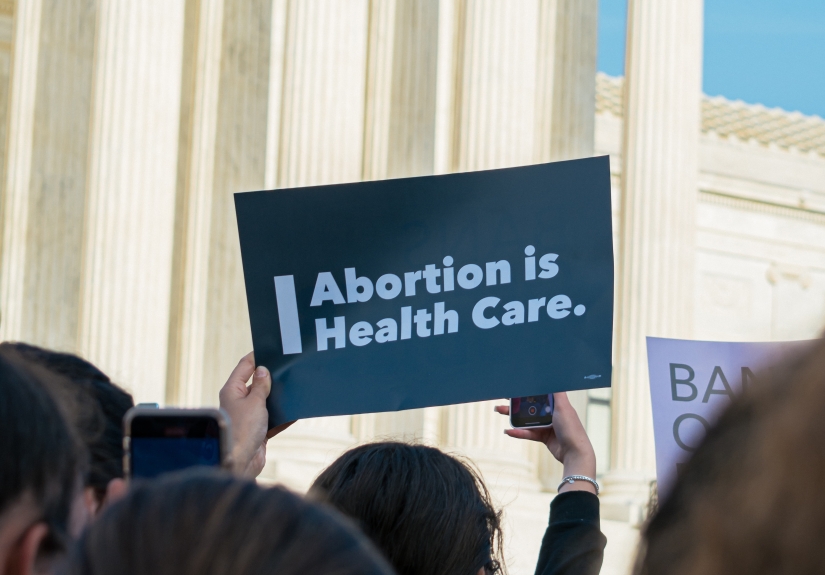National reporting effort, co-chaired by CPH’s Alison Norris, examines impact of Supreme Court ruling

The number of states where abortion was completely banned increased from nine in July 2022 to 13 in March 2023.
A new national report finds there were 25,640 fewer abortions in the U.S. in the nine months following the U.S. Supreme Court’s June 2022 ruling against federal abortion protections in Dobbs v. Jackson Women's Health Organization compared to the average monthly number of abortions in April and May 2022.
While many states where abortion is permitted saw increases in the number of abortions provided, these increases did not compensate for the reductions seen in states where abortion was banned, the #WeCount report finds.
Professor Alison Norris serves as co-chair of the #WeCount reporting effort, housed at the Society of Family Planning, which tracks shifts in the number of abortions by state to understand the impact of policy changes across the country. She also co-leads the Ohio Policy Evaluation Network (OPEN), a research collaborative that studies reproductive health policy in Ohio and surrounding states.
Norris said the first nine months after Dobbs shows a picture of three Americas: one where abortion is banned and 65,920 fewer abortions occurred, representing people who could not access abortion in their home state; another where abortion is available, and clinics are managing surges with patients who are often more distressed and sometimes later in gestation coming from other states; and a third, where abortion numbers haven’t changed much and access remains largely available, areas typically positioned farther from states with bans.
“It is unjust that all people who need an abortion aren’t able to live in this third America, with access to care close at hand,” she said.
State-level impact

The number of states where abortion was completely banned increased from nine in July 2022 to 13 in March 2023.
Researchers identified Florida, Illinois, North Carolina, Colorado and California as “surge states,” where the largest increases in clinician-provided abortions were documented. These states serve as important access points for those able to travel to obtain care.
In the two months leading up to the Dobbs decision, about 2,000 abortions were provided in Ohio each month. Following the ruling, a state law banning abortion after cardiac activity, typically six weeks into pregnancy, went into effect in Ohio — leading to significant declines in the months following the ruling. That ban is again on an indefinite hold.
An average 581 fewer abortions were provided monthly in Ohio during the period studied compared to April 2022, for a total of 5,230 fewer abortions in the nine months post-Dobbs compared to what would have been expected pre-Dobbs.
Ohio clinics have been seeing people needing abortions from nearby West Virginia and Kentucky, which have abortion bans in place. With more people turning to Ohio for abortion care, we would expect to see an increase in abortions per month, Norris said.
“The numbers in Ohio show the ways in which abortion care in states that provide abortion is inadequate to compensate for the loss of abortion in states with bans,” Norris said.
Research shows people who are denied a wanted abortion experience worse outcomes later in life, including poorer physical and mental health and poorer financial well-being. They are also more likely to stay with an abusive partner, said Mikaela Smith, a research scientist with OPEN.
Additional findings
- Researchers consider the average 2,849 fewer abortions provided monthly during the nine months post-Dobbs period to be an underestimate because Texas had a six-week ban in place pre-Dobbs. If Texas did not have a ban in place and pre-Dobbs numbers for April and May 2022 were in line with those months in 2021, the estimates for the nine months following the decision would have been 4,912 fewer abortions per month.
- Abortion rates were increasing in the years before the Dobbs decision, making the net overall declines in abortion in the U.S. after Dobbs even more striking.
- Abortions provided by virtual clinic telehealth providers increased by 85% from a monthly average of 4,025 abortions in the two months before the Dobbs decision, making up 5% of all abortions, to a monthly average of 7,461 abortions, or 9% of all abortions, in the nine months following the Dobbs decision.
- The number of abortions nationally has varied month-to-month. The biggest declines occurred in September, October and November 2022. The largest increases were in January and March 2023.











